News
The 4 most important factors in golf fitness
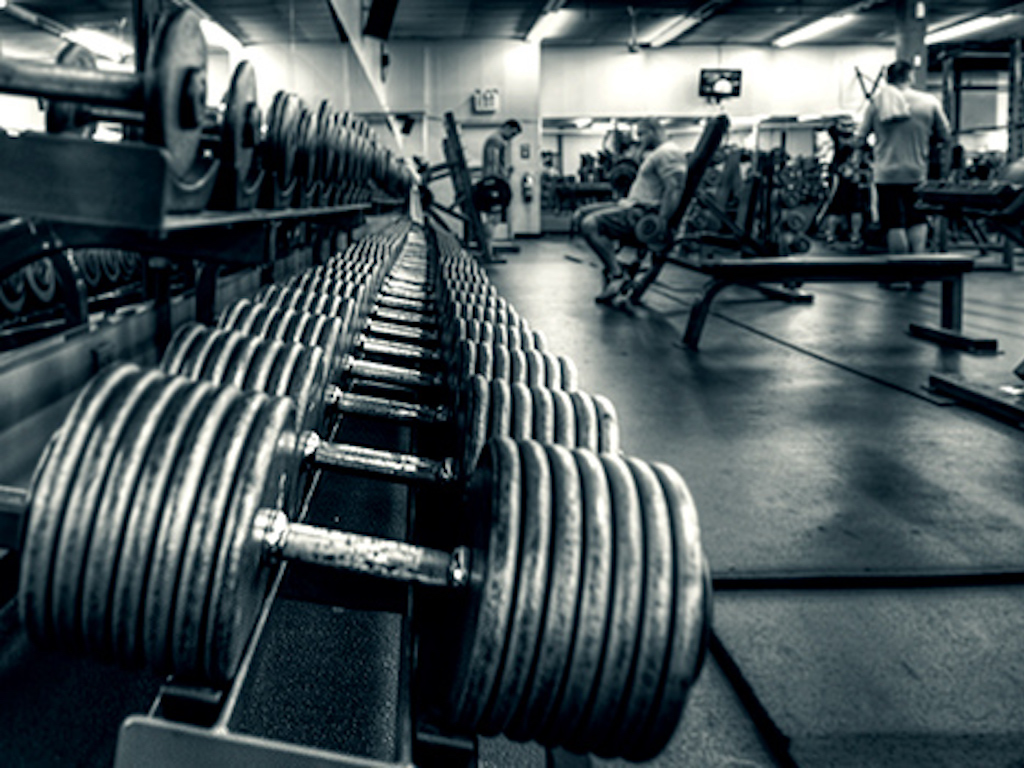
This article is co-written with Jenna Peanasky, Strength and Conditioning Coach at Iowa State University. Jenna has been working with the Cyclones mens and womens golf teams for the past 4 seasons.
One of the best things about being a support staff member with golf is that the sport has embraced the holistic approach of training and sees that to improve your golf game means taking care of your body. Staying healthy is crucial, and staying on top of your physical training by addressing weaknesses and improving upon strengths is key to a long successful career throughout college and beyond. Gone are the days when the strength coach simply writes a program that everyone blindly follows, now programs are individualised to fit the exact needs of the sport and the athlete.
The physical attributes required to play good golf are widely debated, and rightly so when such a vast array of body types have been successful in the sport over the years. Outlined below are what we as trainers working with elite (PGA Tour) and sub-elite (college) golfing athletes, consider to be most important factors in training college golfers:
Posture
Posture is such a significant piece in the golf swing from start to finish, which is why it is such an important aspect in our training. In all aspects of our training we focus on having awareness of where our body is in space and making sure our athletes are able to maintain posture throughout their movements without unnecessary compensations. A key contributor to that approach in the past couple of years has been introducing the GravityFit equipment to our gym and pre golf warm ups. It’s specifically designed to bring awareness to posture and train endurance in the muscles responsible for holding us in good form.
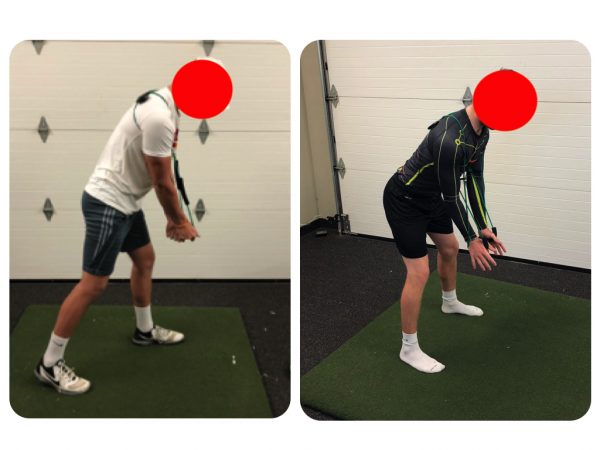
Using the GravityFit TPro to train golf set up and movement patterns
Common postural tendencies for golfers are to go into an excessively rounded set up position, known as C-posture; or to have an exaggerated arch in the low back, known as S-posture. I have found that if a golfer carries these tendencies in their golf setup, they also appear in the gym. We aim to be right in between these postures and maintain a neutral spinal curve. One area of posture that sometimes gets overlooked is head position. All of the time a college golfer spends studying, reading, or sitting on their phone promotes a forward carry of the head, so when in the gym we aim to avoid this at all times and bring awareness to an upright tall posture through the head and neck.
Movement Efficiency & Mobility
Before adding weight to exercises, we make sure the athlete has solid technique whilst performing a wide variety of gym movements. We can start by asking, “Does the athlete have the ability to squat, hinge, lunge, push and pull correctly?” Starting at the feet, we look for a stable base and a strong connection with the ground during movement. Can the athlete maintain a strong connection or is there instability? Everything we do starts from the feet, therefore instability here may cause issues up the chain. Next we move to the hips, does the athlete have the ability to hinge and maintain their posture effectively? Can they create separation between their lower body and upper body? The ability to hinge and disassociate the upper and lower body are key elements in the golf swing so it is important that our athletes have the awareness and ability to perform these movements in the gym extremely well.
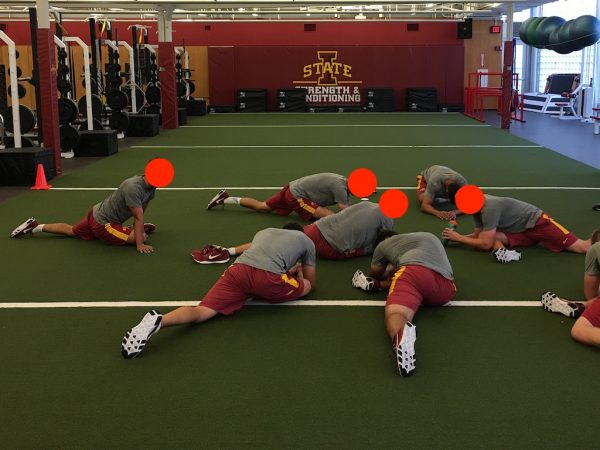
Post session mobility work is a non-negotiable!
Movement efficiency and mobility go hand in hand. Knowing the difference between an athlete having a restriction due to a lack of mobility, or if the inability to perform a movement comes from a lack of skill and/or understanding is important. We strive to look at the body holistically and evaluate movement at the ankle, hip, lumbar spine, thoracic spine, and shoulders. Using a collaborative approach with coaches, athletic training staff, physical therapists, and massage therapists allows us to all have a better understanding of each athlete and their individual needs. Communicating with the entire staff allows us to make sure that we are all on the same page to help our athletes improve as a whole.
Jeremiah Hales has provided an invaluable service as a consulting physical therapist to the Iowa State golf programs. Jeremiah conducts his custom design golf specific physical assessments on the players twice a year. These screenings provide very in-depth and specific information about the player’s stability, posture, mobility and movement efficiency. That information is like gold for the coaching and fitness staff, it helps us prioritise gym workouts, technical training and practice set up for the player. Jeremiah is also a fan of the GravityFit equipment and uses it his assessments and also in the prescription of individualised exercise programs for the players. Click here for his explanation of how and why he uses the equipment with Cordie Walker from Golf Science Lab
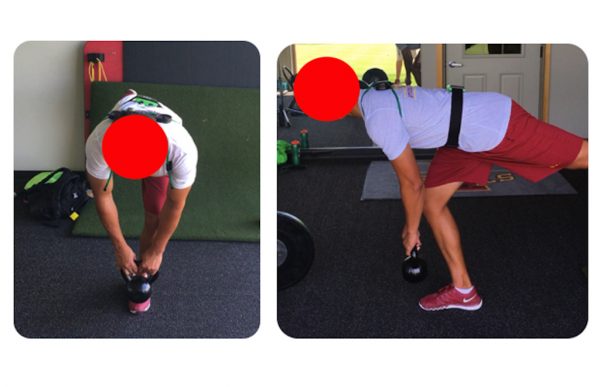
Hinging effectively whilst maintaining posture
Core Stability & Glute Strength
Back injuries are one of the most common issues among golfers. Our goal is to address this from the start by making sure we have stability through the entire core. Golf is a very rotational sport, so our core work focuses predominantly on anti-extension, anti-flexion and anti-rotation. At specific times of year we may incorporate some rotational work, but since these athletes are getting this every day at practice, we benefit more from strengthening the core through stability and creating a rock solid pillar.
The ability to properly activate the glutes is also extremely important. Proper glute firing ensures that the body reduces compensation and minimizes stress on the back. I have seen athletes present with glutes that do not activate well, yet they appear extremely strong through their gym movements. These athletes are compensating and not performing these movements optimally for sport. Once we address these compensations and the athlete learns to properly activate their glutes, they are much stronger than before and put themselves in a better position to avoid injury.
Strength & Power
Golfers must create, transfer and absorb their own force, which can put a lot of stress on the body. Developing strength is like putting on the armour to help protect the body against injury. Moving in all planes of movement and focusing on developing a strong posterior chain is very important. A well rounded program includes a wide variety of movements, including squats, hinges, single leg movements, pushes, pulls, carries, and core exercises. Varying these and incorporating them throughout the year at different intensities and volumes have given us exceptional results in keeping our athletes strong, powerful, and healthy.
Having a strong foundation of strength is the key to developing power. Once a base of strength has been set we work to translate this into power in different planes of movement by increasing the rate of force production. We do this by using various approaches including jumps, medicine ball throw variations, and using accommodating resistance such as chains and bands (see Cam Smith example below). Just like the varying types of movements we use for strength work, we vary our methods based on the time of year and individual needs of each player.
Approach to training
Having a collaborative approach with all members of the staff allows us to look at each athlete from various perspectives to ensure we aren’t missing anything. We have the coach explaining what they are working on in their swing, we have the athletic trainer and physical therapist performing evaluations and prescribing individualized exercises to improve weaknesses. We also have a massage therapist who sees the players regularly to address any soft tissue issues or restrictions. Then there is the strength coach who will write a training program that will help each student-athlete become the best version of themselves through improving in the key areas detailed above.
By working with every member of the staff and taking a holistic and collaborative approach we can all work together and share information to create a better program and plan for each student-athlete.
Click here for more information on the featured GravityFit Equipment
- LIKE35
- LEGIT6
- WOW0
- LOL0
- IDHT1
- FLOP0
- OB0
- SHANK7
Equipment
Did Rory McIlroy inspire Shane Lowry’s putter switch?
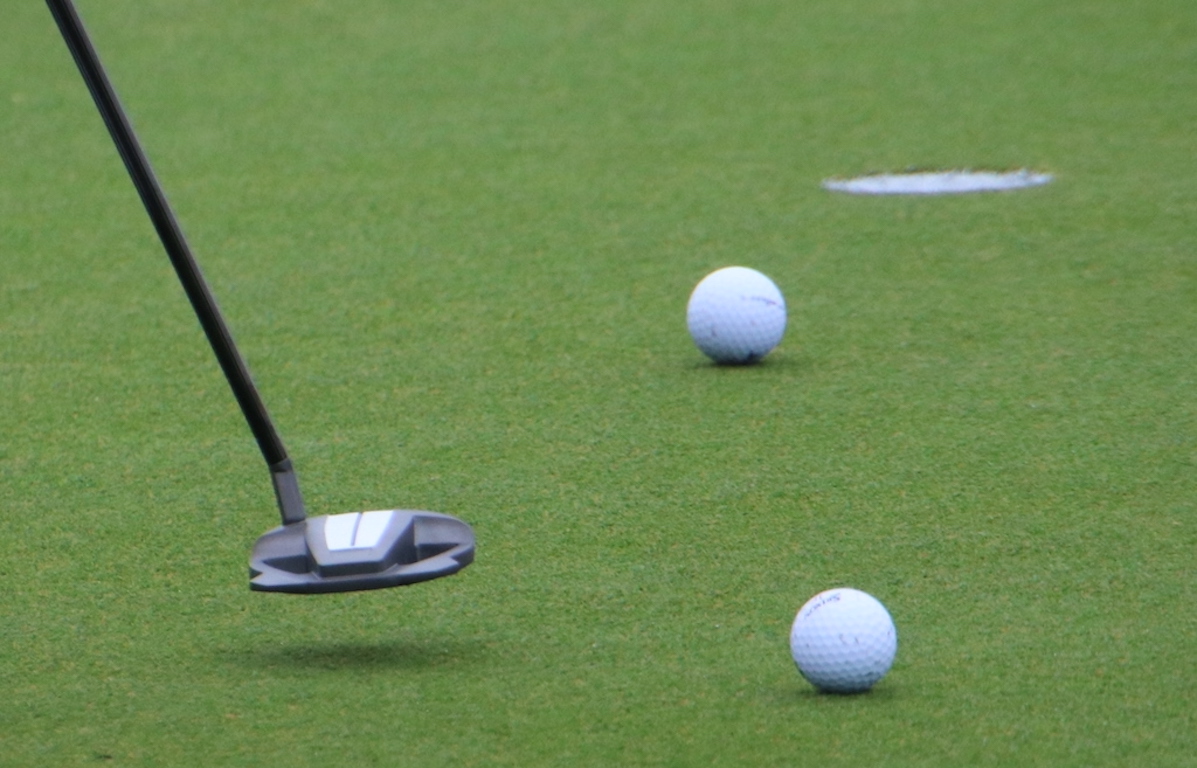
Editor’s note: This is an excerpt from a piece our Andrew Tursky originally wrote for PGATour.com’s Equipment Report. Head over there for the full article.
The timing of Lowry’s putter changeup was curious: Was he just using a Spider putter because he was paired with McIlroy, who’s been using a Spider Tour X head throughout 2024? Was Lowry just being festive because it’s the Zurich Classic, and he wanted to match his teammate? Did McIlroy let Lowry try his putter, and he liked it so much he actually switched into it?
Well, as it turns out, McIlroy’s only influence was inspiring Lowry to make more putts.
When asked if McIlroy had an influence on the putter switch, Lowry had this to say: “No, it’s actually a different putter than what he uses. Maybe there was more pressure there because I needed to hole some more putts if we wanted to win,” he said with a laugh.
To Lowry’s point, McIlroy plays the Tour X model, whereas Lowry switched into the Tour Z model, which has a sleeker shape in comparison, and the two sole weights of the club are more towards the face.
Lowry’s Spider Tour Z has a white True Path Alignment channel on the crown of his putter, which is reminiscent of Lowry’s former 2-ball designs, thus helping to provide a comfort factor despite the departure from his norm. Instead of a double-bend hosel, which Lowry used in his 2-ball putters, his new Spider Tour Z is designed with a short slant neck.
“I’ve been struggling on the greens, and I just needed something with a fresh look,” Lowry told GolfWRX.com on Wednesday at the 2024 Wells Fargo Championship. “It has a different neck on it, as well, so it moves a bit differently, but it’s similar. It has a white line on the back of it [like my 2-ball], and it’s a mallet style. So it’s not too drastic of a change.
“I just picked it up on the putting green and I liked the look of it, so I was like, ‘Let’s give it a go.’”
Read the rest of the piece over at PGATour.com.
- LIKE1
- LEGIT0
- WOW0
- LOL0
- IDHT0
- FLOP0
- OB0
- SHANK0
Equipment
Spotted: Tommy Fleetwood’s TaylorMade Spider Tour X Prototype putter
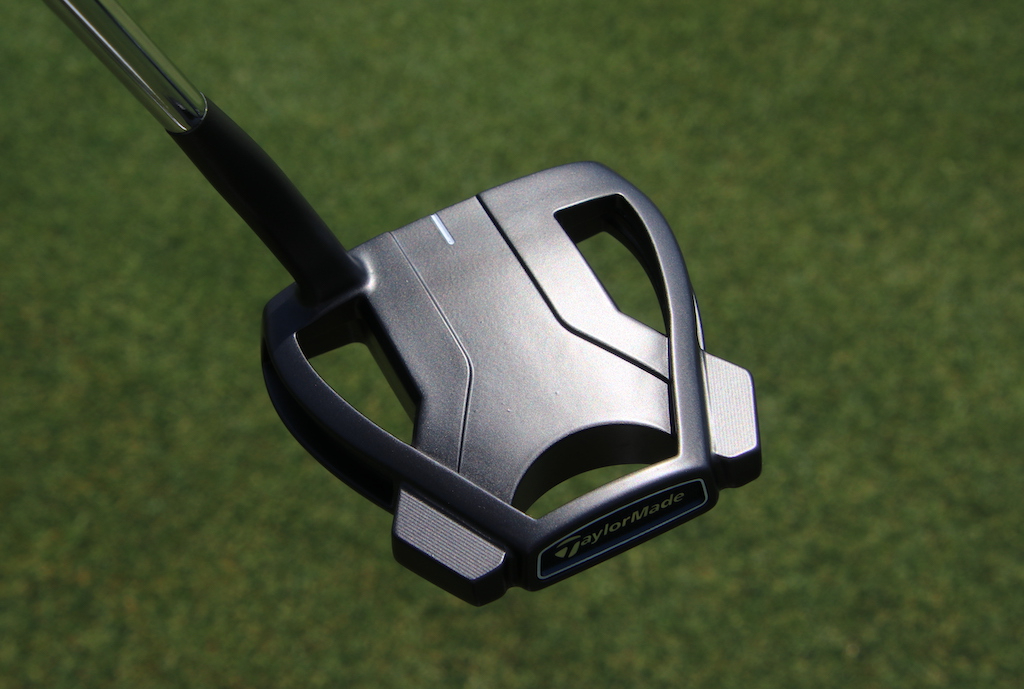
Tommy Fleetwood has been attached to his Odyssey White Hot Pro #3 putter for years now. However, this week at the Wells Fargo Championship, we did spot him testing a new putter that is very different, yet somewhat similar, to his current gamer.
This new putter is a TaylorMade Spider Tour X head but with a brand new neck we haven’t seen on a Spider before. A flow neck is attached to the Spider head and gives the putter about a 1/2 shaft offset. This style neck will usually increase the toe hang of the putter and we can guess it gets the putter close to his White Hot Pro #3.
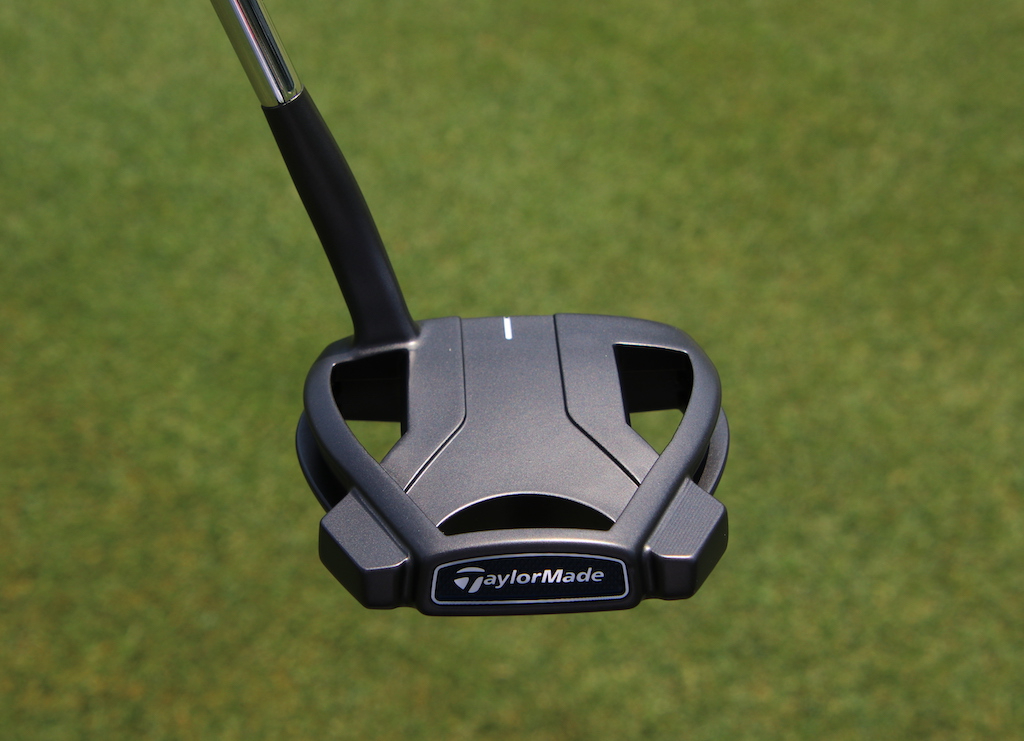
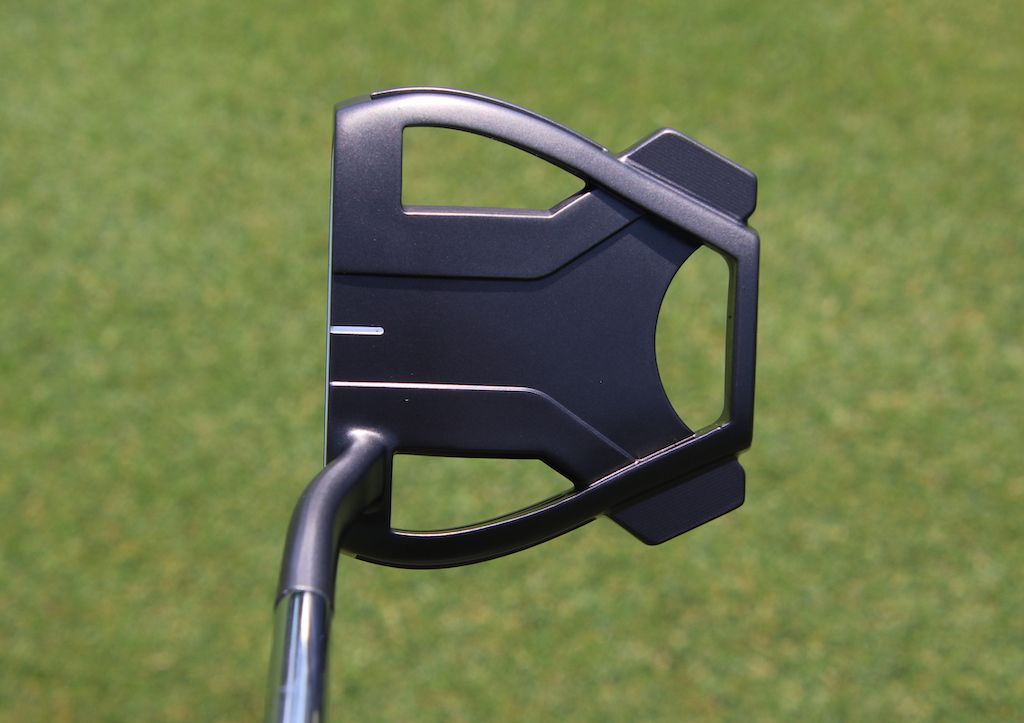
Another interesting design is that lack of TaylorMade’s True Path alignment on the top of the putter. Instead of the large white center stripe, Tommy’s Spider just has a very short white site line milled into it. As with his Odyssey, Tommy seems to be a fan of soft inserts and this Spider prototype looks to have the TPU Pure Roll insert with 45° grooves for immediate topspin and less hopping and skidding.
The sole is interesting as well in that the rear weights don’t look to be interchangeable and are recessed deep into the ports. This setup could be used to push the CG forward in the putter for a more blade-like feel during the stroke, like TaylorMade did with the Spider X Proto Scottie Scheffler tested out.
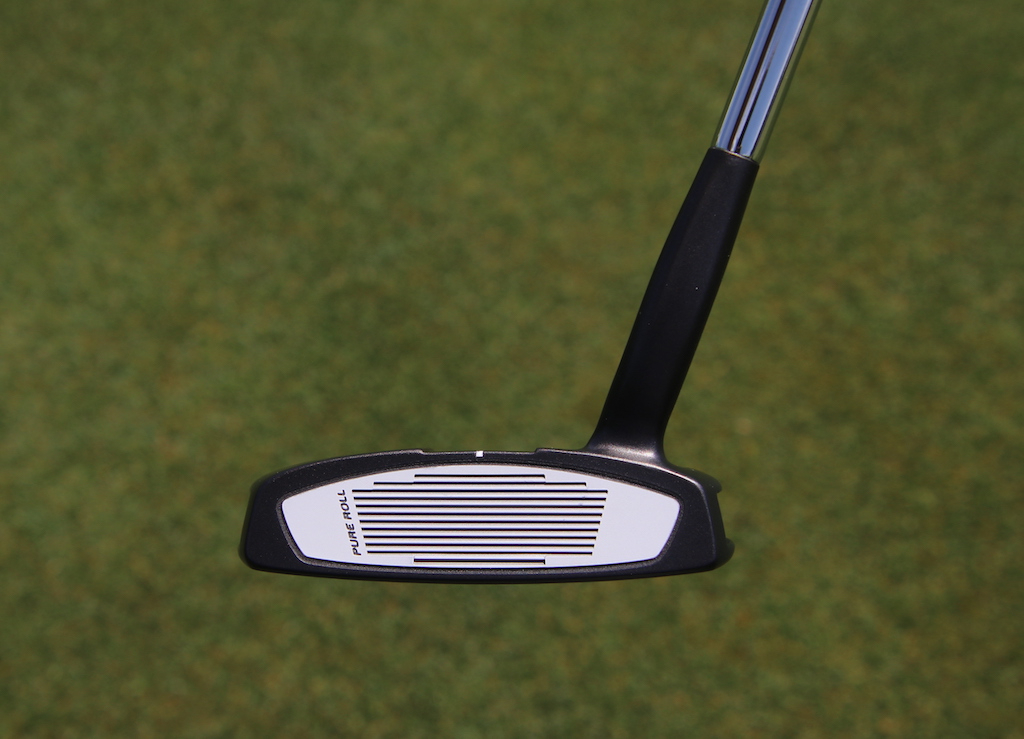
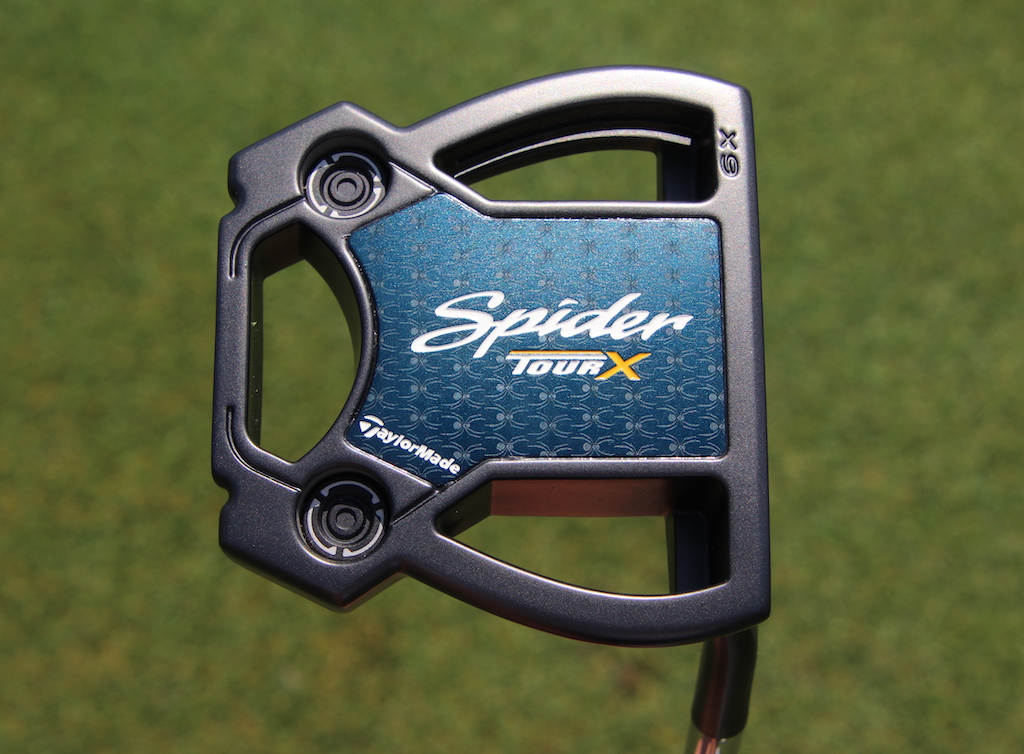
Tommy’s putter is finished off with an older Super Stroke Mid Slim 2.0 grip in blue and white. The Mid Slim was designed to fit in between the Ultra Slim 1.0 and the Slim 3.0 that was a popular grip on tour.
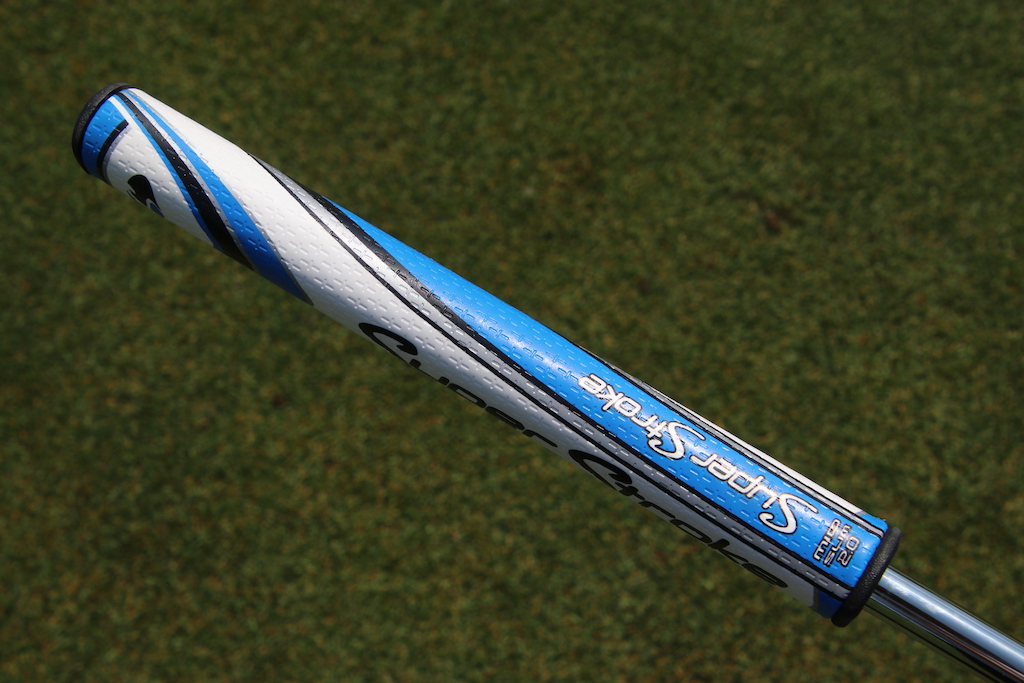
- Check out the rest of our photos from the 2024 Wells Fargo Championship
- LIKE24
- LEGIT2
- WOW2
- LOL1
- IDHT1
- FLOP0
- OB0
- SHANK0
Equipment
Rickie Fowler’s new putter: Standard-length Odyssey Jailbird 380 in custom orange

Editor’s note: This is an excerpt from a piece our Andrew Tursky originally wrote for PGATour.com’s Equipment Report. Head over there for the full article.
…The Jailbird craze hasn’t really slowed down in 2024, either. According to Odyssey rep Joe Toulon, there are about 18-20 Jailbird putter users on the PGA TOUR.
Most recently, Akshay Bhatia won the 2024 Valero Texas Open using a broomstick-style Odyssey Jailbird 380 putter and Webb Simpson is switching into a replica of that putter at the 2024 Wells Fargo Championship.
Now, Fowler, who essentially started the whole Jailbird craze, is making a significant change to his putter setup.
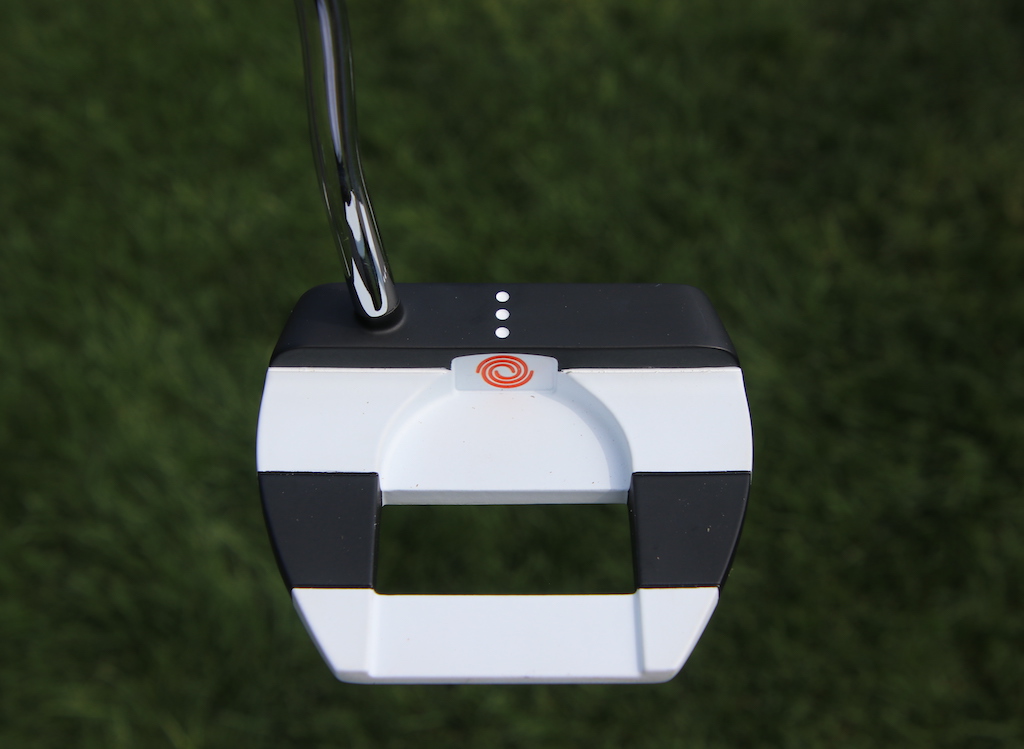
Fowler, who has had a couple weeks off since the 2024 RBC Heritage, started experimenting with a new, custom-orange Jailbird 380 head that’s equipped with a standard 35-inch putter build, rather than his previous 38-inch counter-balanced setup.
According to Fowler, while he still likes the look and forgiveness of his Jailbird putter head, he’s looking to re-incorporate more feel into his hands during the putting stroke.
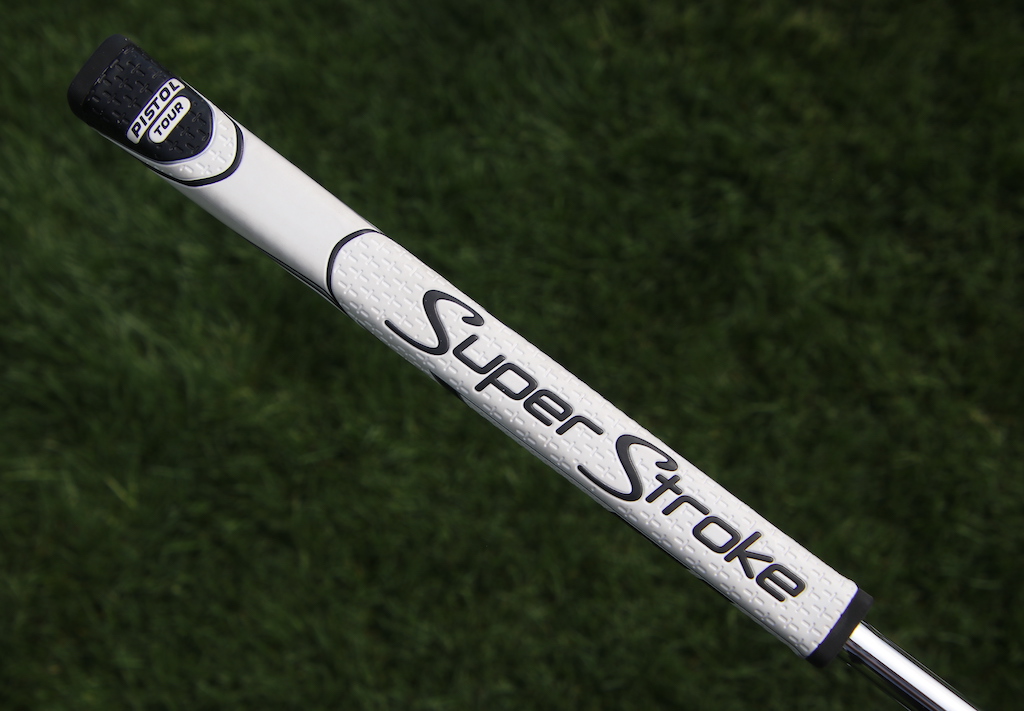
He told GolfWRX.com on Tuesday at the Wells Fargo Championship that the 38-inch counterbalanced setup “served its purpose” by helping him to neutralize his hands during the stroke, but now it’s time to try the standard-length putter with a standard-size SuperStroke Pistol Tour grip to help with his feel and speed control.
Although Fowler was also spotted testing standard-length mallets from L.A.B. Golf and Axis1 on Tuesday, he confirmed that the custom Odyssey Jailbird 380 is the putter he’ll use this week at the 2024 Wells Fargo Championship.
Head over to PGATour.com for the full article.
- LIKE41
- LEGIT11
- WOW3
- LOL4
- IDHT2
- FLOP2
- OB0
- SHANK7
-

 19th Hole3 weeks ago
19th Hole3 weeks agoJustin Thomas on the equipment choice of Scottie Scheffler that he thinks is ‘weird’
-

 19th Hole3 weeks ago
19th Hole3 weeks ago‘Absolutely crazy’ – Major champ lays into Patrick Cantlay over his decision on final hole of RBC Heritage
-

 19th Hole2 weeks ago
19th Hole2 weeks agoLET pro gives detailed financial breakdown of first week on tour…and the net result may shock you
-

 19th Hole4 days ago
19th Hole4 days agoReport: LIV star turns down PGA Championship invite due to ‘personal commitments’
-

 19th Hole1 week ago
19th Hole1 week agoGary Player claims this is what ‘completely ruined’ Tiger Woods’ career
-

 Whats in the Bag2 weeks ago
Whats in the Bag2 weeks agoTeam McIlowry (Rory McIlroy, Shane Lowry) winning WITBs: 2024 Zurich Classic
-

 Equipment3 days ago
Equipment3 days agoDetails on Justin Thomas’ driver switch at the Wells Fargo Championship
-

 Equipment1 week ago
Equipment1 week agoGolf fans left surprised by LIV’s choice of course for its 2024 individual championship event



















harry
Dec 6, 2018 at 12:52 am
“….golf fitness…”…. sounds like an oxymoron when applied to 95% of all golfers worldwide… lol
Dr. Ozy
Dec 5, 2018 at 3:58 pm
Most men who attempt to play golf have bloated pot bellies and seem to think that a new set of clubs or a magical tip will make them into “golfers”. If your belly is pregnant with fat the most athletic thing you can do is to reduce weight, not attempt to swing a golf club.
coastieyaker
Dec 5, 2018 at 12:08 pm
this type of article is getting really old, really fast.
How many more articles are going to be written, only for the reader to discover it is merely click bait for some ill-conceived training product?
This article was wasteful and provided this reader nothing of substance.
Bofhus
Dec 5, 2018 at 7:40 am
Oh no, another video of quarter squats being used to demonstrate “fitness”
sebas
Dec 6, 2018 at 8:22 am
I noticed that as well. Why not full depth??
Under the roof
Dec 5, 2018 at 7:23 am
Nick,
Congrats on the program, in my opinion you’re definitely headed down the right path. You might add a bosu ball to the “core and glute strength” exercises. By standing, on an unstable bosu ball (one foot), and performing the various strength and rotational exercises with bands, weights or just body weight, you will intensify the movements.
One other aspect of the training you might add into the routine is a vinyasa yoga class. Strength, flexibility, balance and a few minutes to clear the mind of all the garbage, is great for golf.
ogo
Dec 5, 2018 at 12:21 am
Golden information for gearheads who love their clubs and ignore their pathetic bodies.
TLW
Dec 4, 2018 at 8:13 pm
The majority of people would benefit much more by following a simple workout program like the 5×5 or anything they can stick with. That information is free, btw.
the dude
Dec 4, 2018 at 4:17 pm
nice ad for gravity fit……ha!